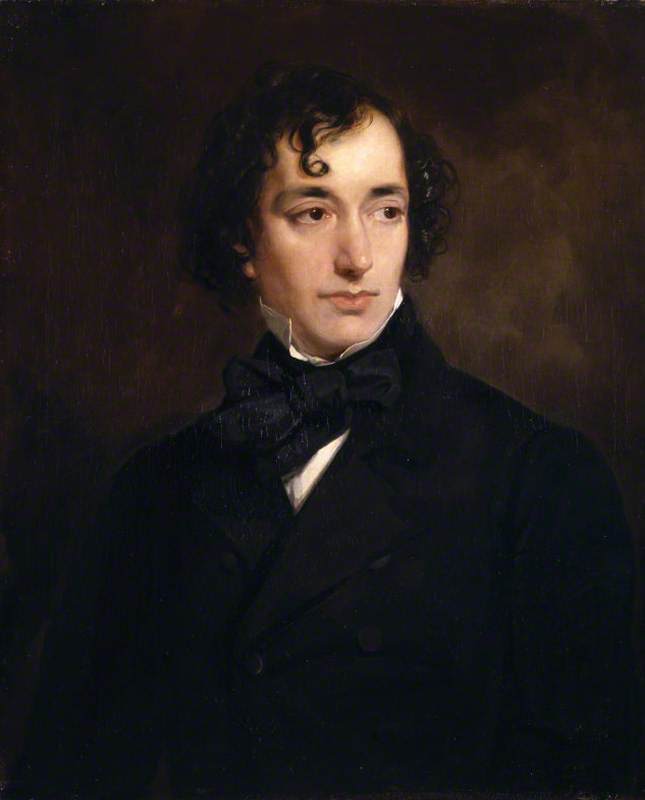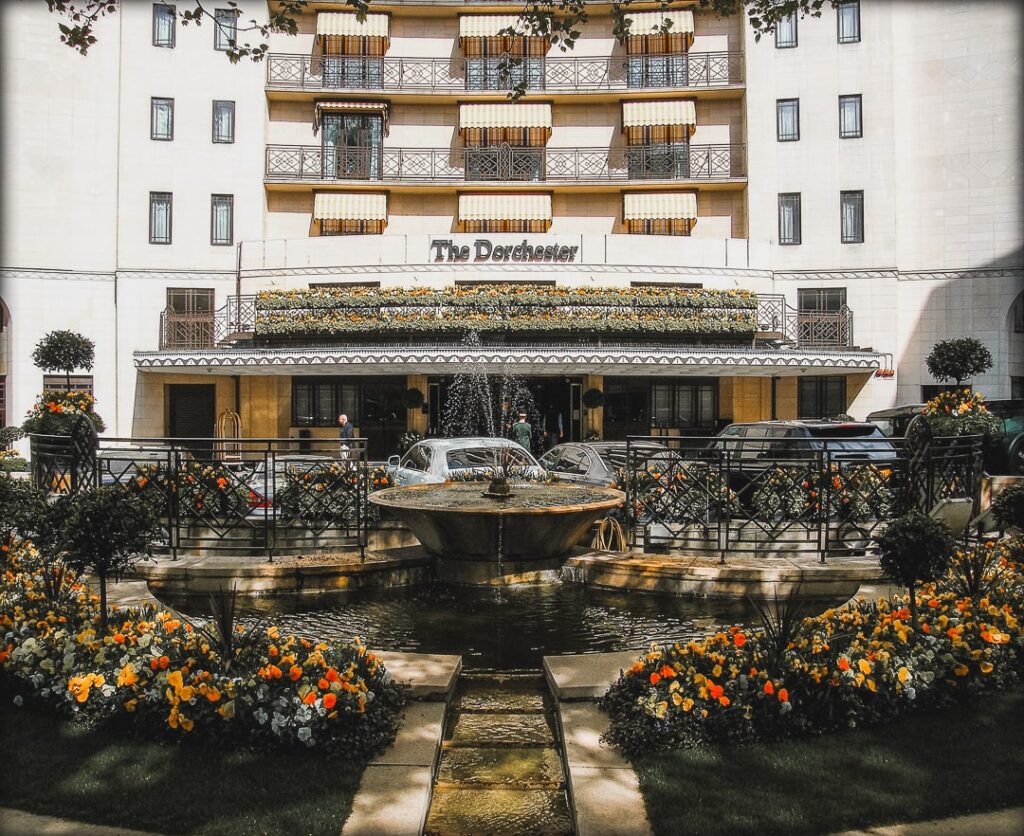Discover how a humble dirt track became Park Lane, one of London's most iconic streets.
The London street we now know as Park Lane has a long and fascinating history. From its days as a hunting ground for royalty, its infamous public executions and its grand Georgian residencies, to its sweep of luxury hotels and high-end brands today, Park Lane has played important, grisly and glamorous roles over time. Join us as we explore this famous street and discover its many secrets.
what is park lane and where is it located?
Park Lane runs for nearly three-quarters of a mile from Hyde Park Corner to Marble Arch in London’s “City of Westminster” district. The wide boulevard is nestled between the open greenery of Hyde Park and the historic buildings of Mayfair, fashionable for its boutiques, restaurants and village feel.
Although it’s known to your satnav as the A4202, part of the London Inner Ring Road, it will always be Park Lane to humans. It’s popular with visitors for its rich history, five star hotels and luxurious residences, as well as its closeness to some of London’s most famed thoroughfares for shopping and culture: Oxford Street, Piccadilly and Regent Street. Nearby you’ll find underground stations that connect right across the city, including Hyde Park Corner (Piccadilly line), Bond Street (Central, Jubilee and Elizabeth lines) and Green Park (Victoria, Jubilee and Piccadilly lines).
You can learn more about London’s most famous streets here.

the history of park lane
From the Domesday Book to 17th century London: Park Lane’s gruesome beginnings
Considering Park Lane is less than a mile long, its influence on London’s identity is long-lasting, with a history that spans centuries. Originally called Tyburn Lane, it led out of Tyburn, a village mentioned in the Domesday Book of 1085, close to the current location of Marble Arch in central London. From 1108-1783, Tyburn Lane was synonymous with death, as The Tyburn Tree, where Marble Arch is now situated, functioned as London’s primary gallows. Oliver Cromwell was even given a posthumous execution there. By the 1500s, huge crowds gathered to watch the public hangings as King Henry VIII thundered through Hyde Park, his private hunting grounds, in pursuit of deer, followed by elegant lords and ladies on their horses. Surrounded by a great wall, Hyde Park only became accessible to the general public in 1637 in a decree by King Charles I. Queen Anne and King George II made further accessions to make the grounds free for all to enjoy.
18th and 19th centuries: Park Lane as a fashionable residential area
It was during the 18th century that Tyburn Lane was renamed as Park Lane, a much grander address for the barons and earls who began to build their not-so humble dwellings along the edge of Hyde Park. Many of these mansions were designed by renowned architects and boasted beautiful gardens and impressive facades.
In the 19th century, well-to-do members of Victorian society flocked to Park Lane as a coveted destination. One of the most ambitious townhouses in London was Grosvenor House, developed and extended from its site’s acquisition in 1805 through to having electricity, a revolutionary technology, installed in 1889. The building was so influential that Grosvenor Square was named after it, but in the 1920s the house was destroyed by fire.
20th and 21st centuries: How war and commerce shaped the Park Lane we see today
By the beginning of the 20th century, Park Lane was attracting “new money” and the homes built for Edwardian mine owners and financiers became increasingly ostentatious. As a result, the area fell out of favour with its original elite ambassadors. However, shrewd business minds spotted the opportunity presented by the location and its spectacular architecture.
Many of its mansions were converted into exclusive clubs and hotels, earning Park Lane its reputation as home to world class luxury hotels including The Hilton and The Four Seasons. Perhaps the most famous of these new additions was The Dorchester, which opened in 1931 and quickly became a favourite haunt of the rich and famous. Guests included Elizabeth Taylor, Dwight D Eisenhower and Alfred Hitchcock. The Art Deco style influenced new mansion blocks, cinemas and street lighting in the area. In 1933, Princess Elizabeth, the future Queen Elizabeth II, learnt to skate at the Grosvenor House Hotel’s ice rink at just seven years of age. Sadly the rink no longer exists.
During World War II, Park Lane suffered significant damage from bombing raids, with many of the area’s grand properties destroyed or severely damaged, including direct hits recorded between Wood’s Mews and Green Street as well as to Dudley House, which lost its ballroom and picture gallery. After the war, the area underwent a period of intense redevelopment, resulting in the mix of old and modern buildings you see today.
park lane in popular culture
Park Lane has consistently featured in popular culture, spanning literature, film and even board games. In Sir Arthur Conan Doyle’s novel “The Adventure of the Empty House”, Sherlock Holmes investigates a murder that occurs at No. 427 Park Lane. Les Ambassadeurs Club, a luxury casino which backs onto Park Lane, was the inspiration for the the set on which Sean Connery is first introduced as James Bond in the franchise’s inaugural film Dr. No. In fact, the Dorchester Hotel recently opened a James Bond-inspired bar called Vesper. One assumes their martinis are to die for. Two scenes from The Beatles’ 1964 film A Hard Day’s Night were also filmed at Les Ambassadeurs.
For many generations of board game aficionados, Park Lane is ubiquitous with power, featuring alongside Mayfair as the most expensive property set on the London Monopoly Board..

by Francis Grant British Prime Minister Benjamin Disraeli
lived on Park Lane for over 30 years. Courtesy: National Trust.
famous people who lived on park lane
Over the years, many famous people have lived on Park Lane, including the 18th century British prime minister Benjamin Disraeli, who lived at No. 93 for over three decades. The Duke of Westminster lived at Grosvenor House, which he bought for £20,000 in 1805, with other aristocratic residents including the Duke of Wellington and the Duke of Somerset. Celebrities known to have frequented Park Lane’s multitude of luxury hotels include Fred Astaire, Douglas Fair Banks Jr, Laurence Olivier, Cary Grant, Barbra Streisand and any number of rock stars, models and actors.
places to visit

Today, Park Lane is a bustling and vibrant street, home to some of London’s most iconic landmarks. We recommend stopping by for a drink at the Dorchester Hotel’s Vesper bar, and a massage at the Four Seasons Hotel overlooking Hyde Park and watching the sunset from the Sky bar at the Hilton London Park Lane.
Park Lane is home to a number of exclusive shops, including an Aston Martin showroom. If you’re of a mind to sample some of the capital’s fine dining, you can enjoy modern French haute cuisine at Galvin at Windows, or unwind in the luxurious CUT at 45 Park Lane. Or for something quick, delicious and possibly caffeinated, the eminently instagrammable EL&N London offers a world of pink deliciousness. Once you’re sated, be sure to take a stroll around the historic Hyde Park.
conclusion
Over the centuries Park Lane has been home to some of London’s famous stunning architecture, most powerful people and innumerable historic events.
Today it remains one of the most stylish and desirable neighbourhoods in the city; a serene oasis of high-end shopping and dining, bordered by the green expanse of Hyde Park.
Park Lane is an ideal jumping off point to explore central London and beyond, and Hyde Park Residence – located at 55-60 Park Lane – is the perfect place to experience it.
Get in touch with us today to learn about our long-term, flexible rentals.
Copyright © 2025 Hyde Park Residence. All rights reserved.


